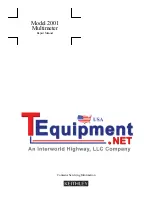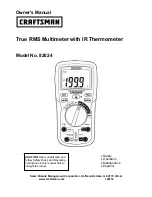
3
METHOD 1 - Adhesive Mounting Base
This method involves attaching a base to the test
structure, then securing the sensor to the base. This
allows for easy removal of the accelerometer. Also,
since the bases are of a “hard-coated” aluminum design,
they provide electrical isolation to eliminate ground
loops and reduce electrical interference that may be
present on the surface of the test object.
STEP 1:
Prepare a smooth, flat mounting surface. A
minimum surface finish of 63
in (0.00016 mm)
generally works best.
STEP 2:
Stud-mount the sensor to the appropriate
adhesive mounting base according to the guidelines set
forth in
STEPS 2
and
3
of the Stud Mount Procedure.
STEP 3:
Place a small portion of adhesive on the
underside of the mounting base. Firmly press down on
the assembly to displace any extra adhesive remaining
under the base.
Figure 4.
Mounting Base: Adhesive Installation
METHOD 2 - Direct Adhesive Mount
For restrictions of space or for convenience, most
sensors (with the exception of integral stud models) can
be adhesive-mounted directly to the test structure.
STEP 1:
Prepare a smooth, flat mounting surface. A
minimum surface finish of 63
in (0.00016 mm)
generally works best.
STEP 2:
Place a small portion of adhesive on the
underside of the sensor. Firmly press down on the top
of the assembly to displace any adhesive. Be aware that
excessive amounts of adhesive can make sensor removal
difficult.
Figure 5.
Direct Adhesive Mounting
4.3 HANDHELD OR PROBE TIP MOUNT
This method is NOT recommended for most
applications. It is generally used only for machinery
monitoring and other portable trending applications.
Both the accuracy and repeatability at low (<5 Hz) and
high frequency (>1 kHz) ranges are questionable.
5.0 CABLING
Care and attention to installation is essential, as the
reliability and accuracy of your system is no better than
that of the output cable. Charge mode sensors require
the use of low noise cables. Cables and connectors must
be kept clean and dry to maintain high insulation
resistance. In the event that the insulation resistance is
compromised, inspect, clean, and bake cables and
connectors to restore insulation resistance.
STEP 1:
Ascertain that you have ordered the correct
cable type. Use only PCB Series 003 Low-Noise Cable
(or equivalent) with charge-output accelerometers.
Some integral-cable units use Series 030 Cable, which is
also low noise. Keep connections clean to maintain
insulation resistance and good low-frequency response.
STEP 2:
Connect the cable to the accelerometer. A
small amount of thread-locking compound placed on the
connector prior to attachment helps secure the cable
during testing. In harsh environments, the connection
can be sealed with silicone rubber, O-rings, and flexible
heat-shrink tubing.
TYPE 1: Coaxial Connectors
First, plug the male connector of the cable into the
mating female sensor connector. Then, holding the
sensor stationary, secure the connector in place by
tightening down the attached cable sleeve.
TYPE 2: Pigtail Connections
“Pigtail” connections are convenient for easy field repair
of cable connections. Simply solder the stripped cable
to the exposed pins on the sensor. (Check the
Installation Drawing
to determine signal and ground
Summary of Contents for 357B54
Page 14: ......

































